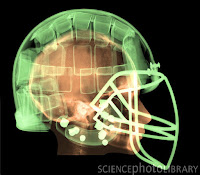You've probably seen calculators with solar cells -- devices
that never need batteries and in some cases, don't even have an off button. As
long as there's enough light, they seem to work forever. You may also have seen
larger solar panels, perhaps on emergency road signs, call boxes, buoys and
even in parking lots to power the lights.
The sun's light (and all light) contains energy. Usually,
when light hits an object the energy turns into heat, like the warmth you feel
while sitting in the sun. But when light hits certain materials the energy
turns into an electrical current instead, which we can then harness for
power. A solar cell is a device
people can make that takes the energy of sunlight and converts it into
electricity.
WHY DON’T WE SEE MORE APPLICATIONS OF SOLAR ENERGY?
Solar cells are expensive to make and to install. They are not very efficient – meaning
that they for every one unit of light energy they convert to electricity, about
three units are wasted (or converted to heat). In some cases, they are a smart choice, in locations with
long hours of sunlight, or in special applications such as satellites.

HOW ARE SOLAR PANELS LIKE LEAVES ON A TREE?
Solar panels CONVERT energy from the sun into
electricity. Leaves on plants and
trees CONVERT energy from the sun into chemical energy. This process is called photosynthesis.
THINK LIKE A SCIENTIST AND EARN A REWARD
You are the scientist who is in charge of a new electrical power
system for GW Long Elementary. The
Governor of Alabama is requiring that you use one of these methods to power the
school:
- Solar Energy
- Wind Energy
- Energy Derived from Water (Rivers)
In your first meeting with the Governor, he provided you three maps to use in your study.
Prepare a short report for Governor Bentley that answers the
following questions. (You might have to do some additional research online in order to complete your answers.)
- What would a solar energy system look like at GW Long? Describe in words or draw a picture.
- Why might it be a good choice? (provide at least three reasons)
- Are there any challenges that would have to be addressed?
(list at least three)
- What would a wind energy system look like at GW Long? Describe in words or draw a picture.
- Why might it be a good choice? (provide at least three reasons)
- Are there any challenges that would have to be addressed?
(list at least three)
- What would a water energy system look like for GW Long? Describe in words or draw a picture.
- Why might it be a good choice? (provide at least three reasons)
- Are there any challenges that would have to be addressed?
(list at least three)
- What source of energy is your final recommendation to the Governor?
To EARN A REWARD, turn in your answers to Mrs D before class on Friday, September 21st.







































.jpg)
.jpg)
.jpg)
+(640x479).jpg)
.jpg)
.jpg)
.jpg)
.jpg)
.jpg)

